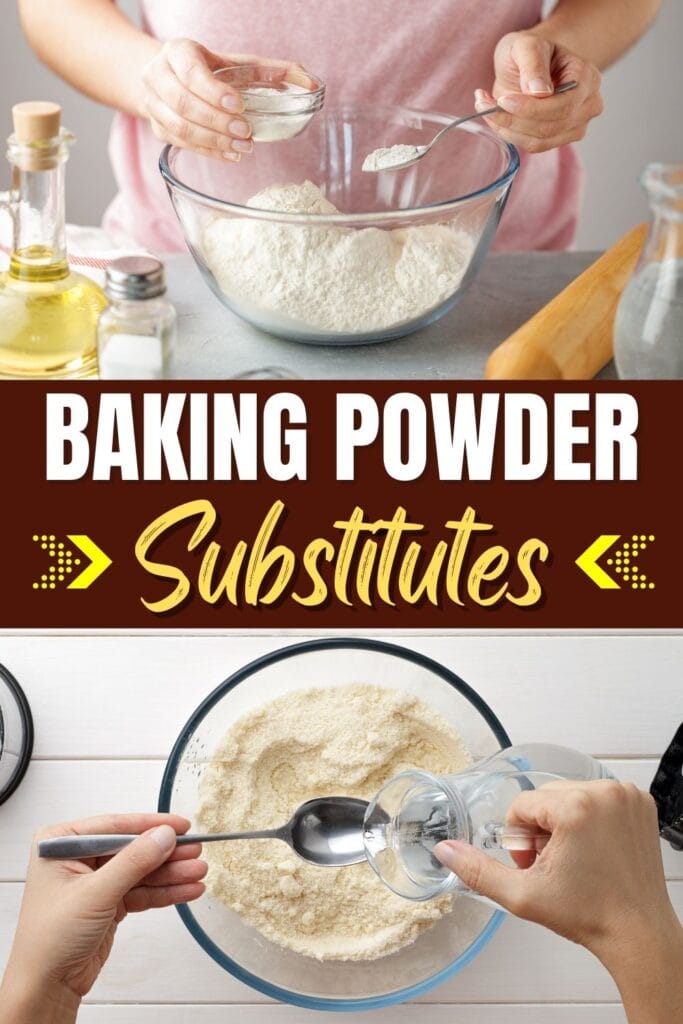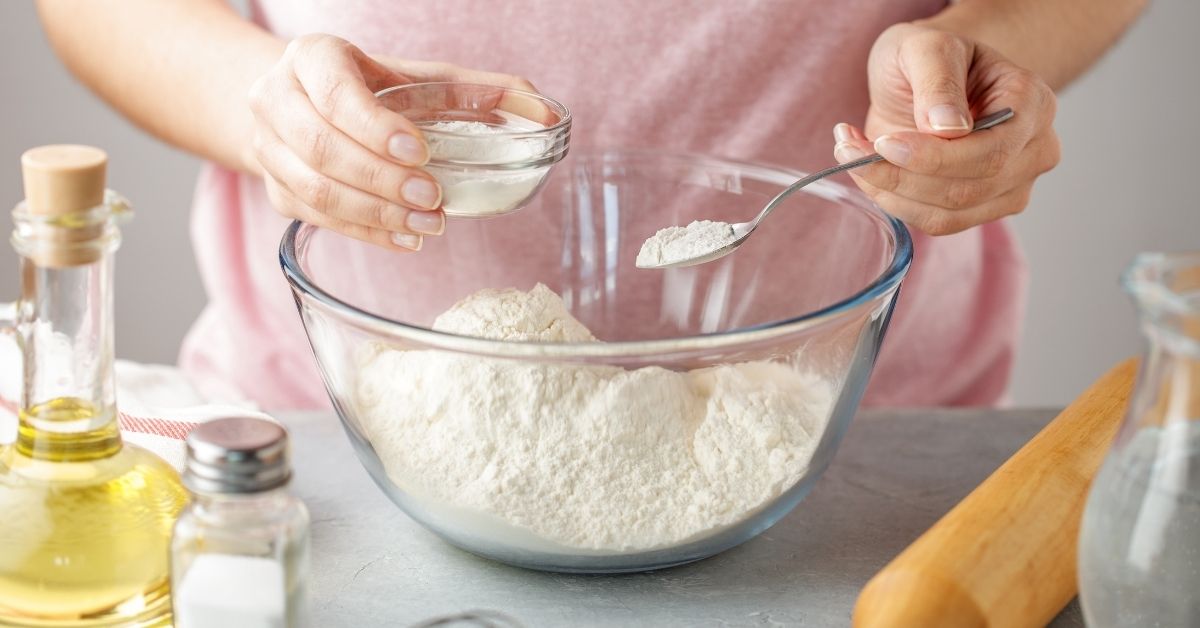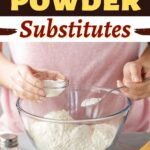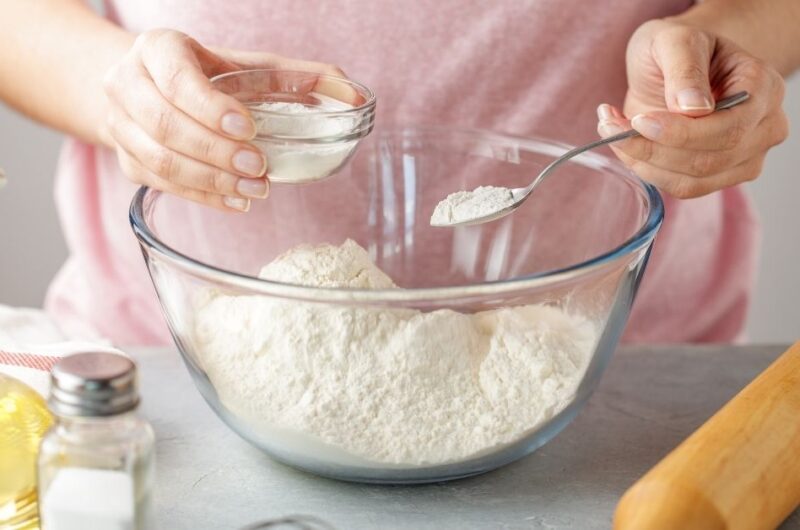If you’re a baker, it’s good to have some baking powder substitutes on hand.
After all, we never plan to run out of something. But we can be prepared should it happen anyway.

There’s nothing worse than being in the middle of cooking and not having what you need.
It can ruin your whole recipe!
That’s why I love these baking powder substitutes.
Most are pantry staples, so you don’t need to rush to the store. And they work well in many different types of recipes.
But before we get into the specifics, let’s answer the question what is baking powder? And how is it so different from baking soda?
What is Baking Powder?
Baking powder is a combination of sodium bicarbonate, acid, and a filler.
It’s added to baked goods as a leavening agent, and it’s how cakes and pastries become so fluffy and light.
But how does it work?
Well, water is the catalyst. Whenever you add water to baking powder, something scientific happens:
- The sodium bicarbonate (the base) reacts with the acid, releasing CO2.
- The filler, usually cornstarch, helps slow down the chemical reaction.
- The dough/batter expands and rises, increasing the volume of the recipe.
It’s actually a pretty neat process. So you see, baking really is both an art and a science.
Baking Powder vs Baking Soda
If you’ve already scrolled down a little, you’ll see that baking soda is a top substitute for baking powder.
But it’s not quite that easy. You probably also noticed that it’s baking soda with something else, like buttermilk or yogurt.
You see, baking powder is usually a mix of baking soda and an acid (like cream of tartar). And it needs that acid to work.
In contrast, baking soda is just that. It has no acid in the mix to get it moving. So, you have to add it to the recipe to create those bubbles.
Get it? That’s why many recipes with only baking soda call for something like sour cream.
If nothing else, just remember the following:
- Baking powder contains baking soda, plus some kind of acid.
- Baking soda contains no acid, so it needs additional ingredients, like vinegar, lemon juice, or yogurt, to activate it.
Top 10 Baking Powder Substitutes
The following is a list of ten baking powder substitutes for all your baking needs.
Most are easy swaps, but they’re not all ideal for every recipe. So be sure to read the descriptions to find the best substitute for your needs.

1. Cream of Tartar + Baking Soda
As mentioned, baking powder is basically a mix of baking soda and (usually) cream of tartar.
It also typically contains cornstarch to keep it from clumping, though that’s optional.
So, how about we substitute baking powder with a homemade blend?
It’ll give you the same taste and texture, and you can even make it in bulk for use later.
This blend won’t be as potent as the commercial stuff. Still, it will work in pretty much every recipe that calls for baking powder.
How to Substitute: Swap 1 teaspoon of baking powder with 1/4 teaspoon baking soda + 1/2 teaspoon cream of tartar + 1/4 teaspoon cornstarch.
Keep in mind, if you leave out the cornstarch, you’ll need to get your bake in the oven asap. Without it, the reaction will be quick!

2. Buttermilk + Baking Soda
Another easy way to add acidity to baking soda is with buttermilk. Plus, you get the added benefits that come with buttermilk, like an extra moist crumb.
Of course, you’ll need to decrease the other liquids in the recipe for this one to work.
And it won’t work for recipes that are quite firm, like cookie dough.
That said, it’s a super easy option for recipes that already call for buttermilk, like cake or pancakes.
Just mix in the baking soda before adding it to the bowl.
How to Substitute: Swap 1 teaspoon of baking powder for 1/4 teaspoon of baking soda + 1/2 cup of buttermilk.

3. Self-Rising Flour
Self-rising flour is the go-to flour for a lot of British recipes. And believe it or not, it doesn’t need any leavening agents.
Why? Because, as the name suggests, it’s already in the mix.
Self-rising flour is just plain old flour with baking powder and salt added. So it makes a terrific baking powder alternative.
To use, you’ll simply omit the baking powder and salt and swap the all-purpose flour for self-rising flour.
Easy, huh?
Better yet, you can make it at home. Here’s how:
- Mix 1 cup of all-purpose flour with 1 1/2 teaspoons of baking powder and 1/2 teaspoon of salt.
- Whisk well to distribute and use in your recipes.
How to Substitute: Swap the all-purpose flour in the recipe for self-rising flour and omit the baking powder and salt listed.
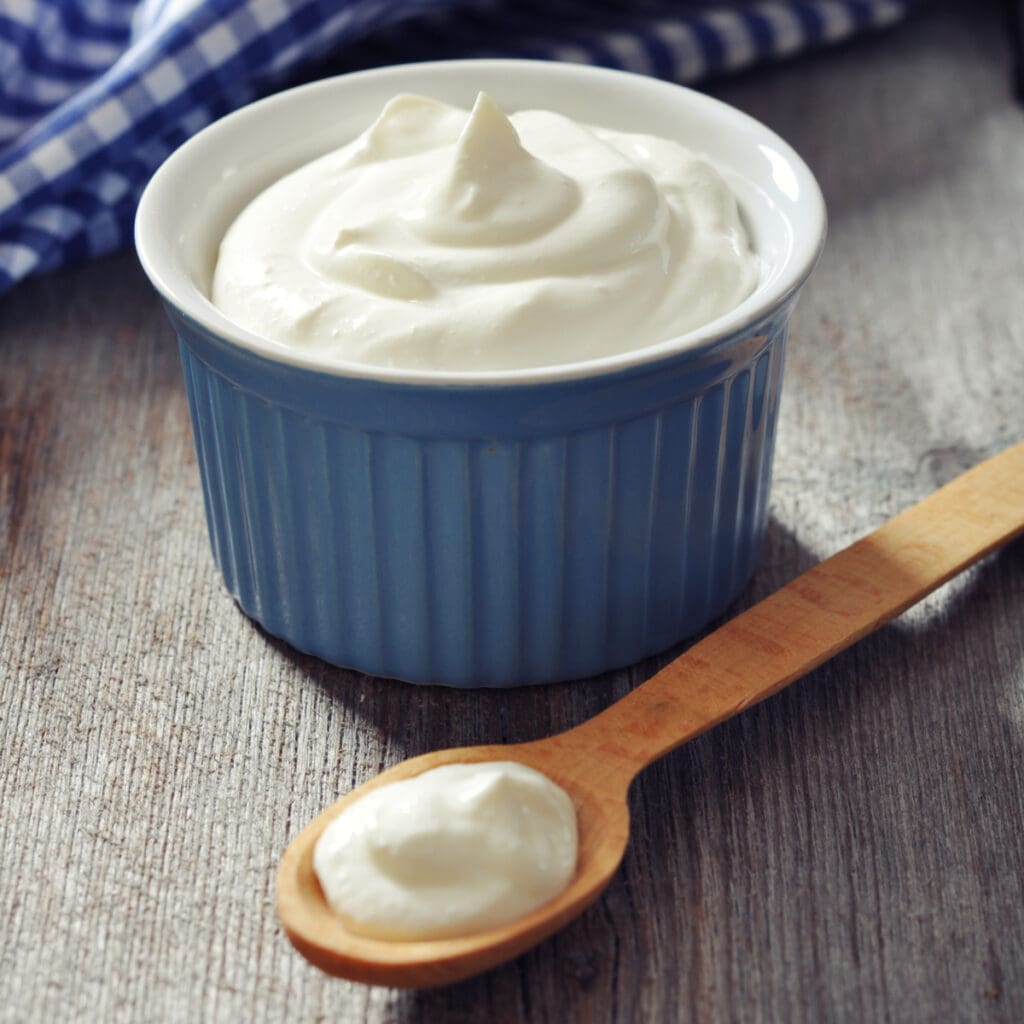
4. Plain Yogurt + Baking Soda
If you don’t have buttermilk on hand, plain yogurt is the next best thing.
It works just like buttermilk and baking soda and will bring plenty of rich moisture to the bake.
Better yet, this is a better choice for recipes that need more texture, like biscuits.
Yogurt is typically thicker than buttermilk (especially Greek), so this option won’t make the final batter/dough as thin.
And if you need it thinner, you can easily water it down a little with a splash of milk or water.
How to Substitute: Swap 1 teaspoon of baking powder for 1/4 teaspoon of baking soda + 1/2 cup of plain yogurt.
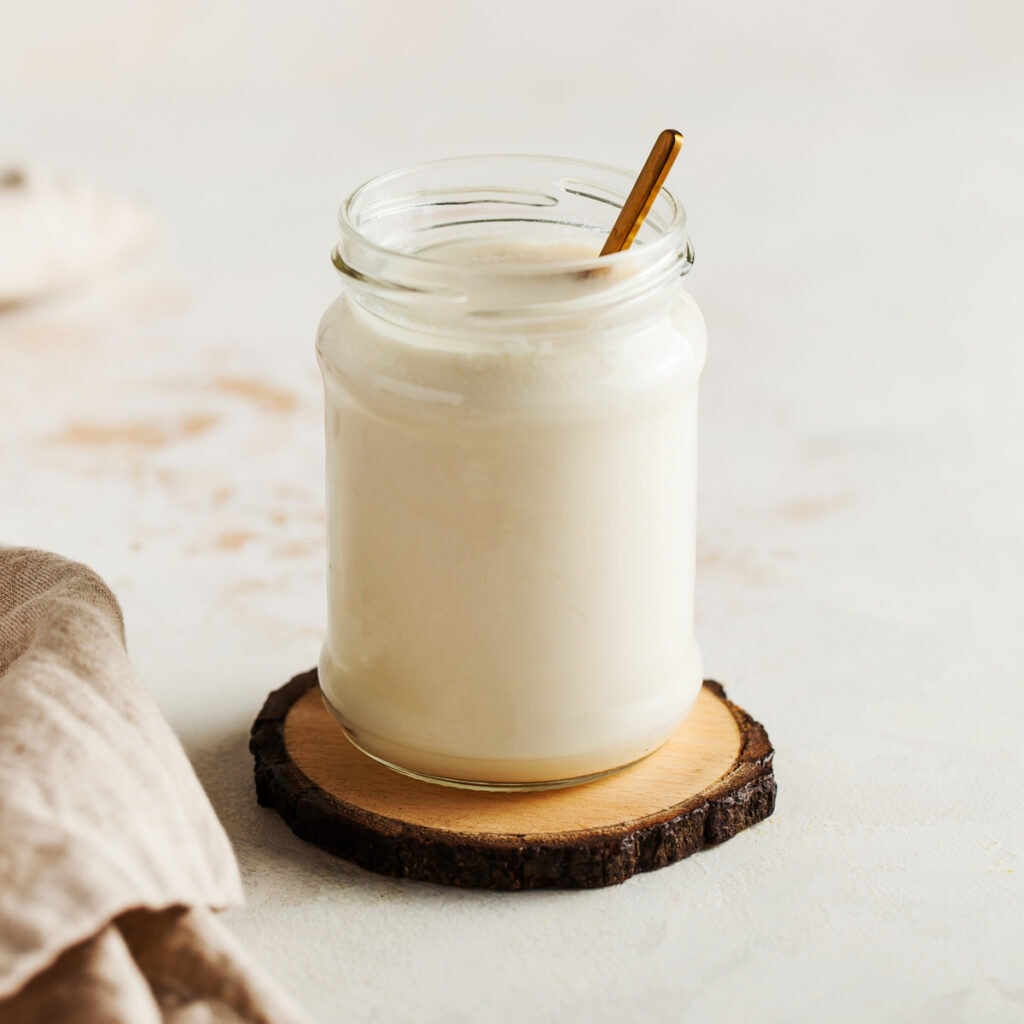
5. Sour Milk + Baking Soda
When I say “sour milk,” I actually mean homemade buttermilk – or something pretty close.
Did you know you can make buttermilk with regular milk and acid? It’s true.
Just add a tablespoon of lemon juice or white vinegar to a measuring cup, then fill it up with milk. Let it sit, and voila! Homemade buttermilk!
I know it doesn’t sound pleasant, but that’s basically what buttermilk is. And the acidity is ideal for baking soda.
You use the same ratios as you would for buttermilk. And be sure to cut down the other liquids, where applicable.
How to Substitute: Swap 1 teaspoon of baking powder for 1/4 teaspoon of baking soda + 1/2 cup of sour milk.
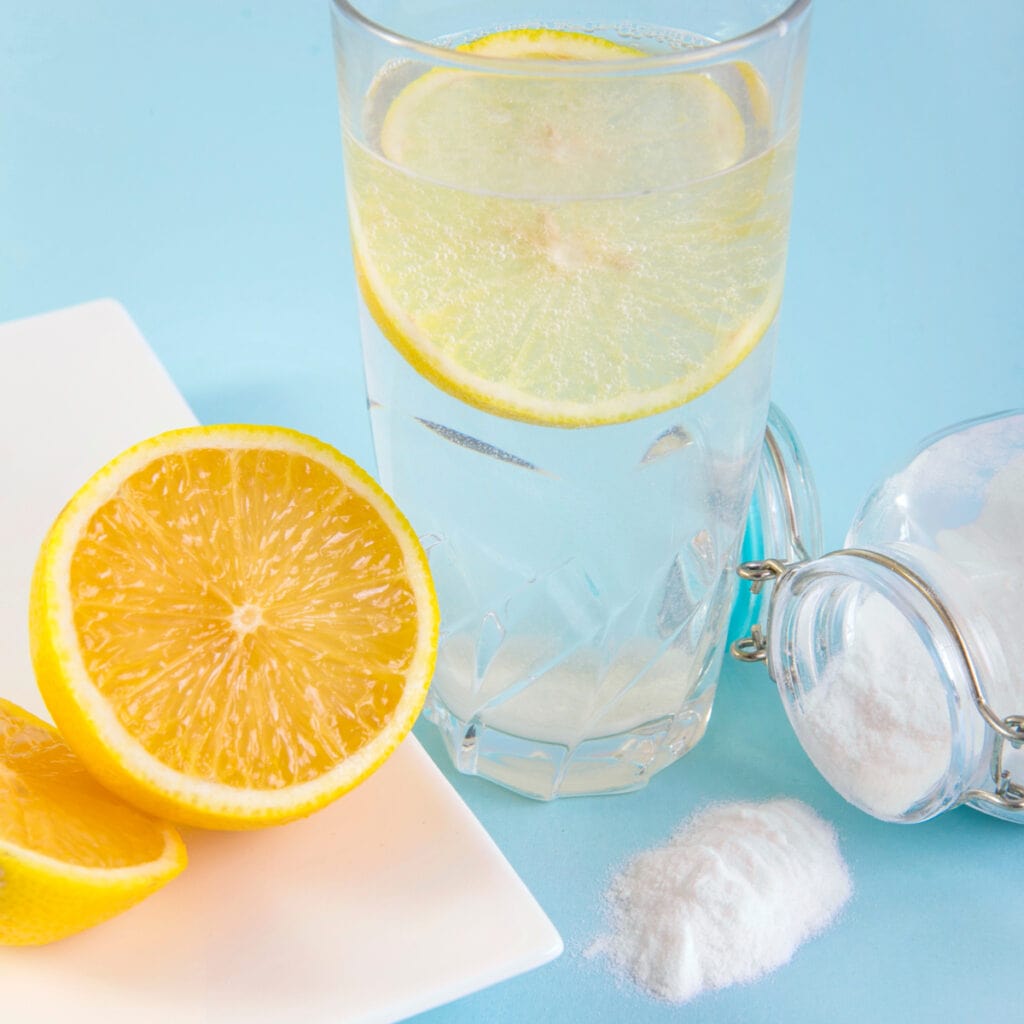
6. Lemon Juice + Baking Soda
The first thing to know about using lemon juice is that it has a strong flavor.
Therefore, you might not want to use it in recipes that need a lot of baking powder.
You might get a bright lemon taste that masks the other ingredients if you do. Unless you’re making lemon cake, that is!
However, it’s an excellent option for recipes that only need a teaspoon or two of baking powder.
How to Substitute: Swap 1 teaspoon of baking powder with 1/4 teaspoon of baking soda + 1/2 teaspoon of lemon juice.
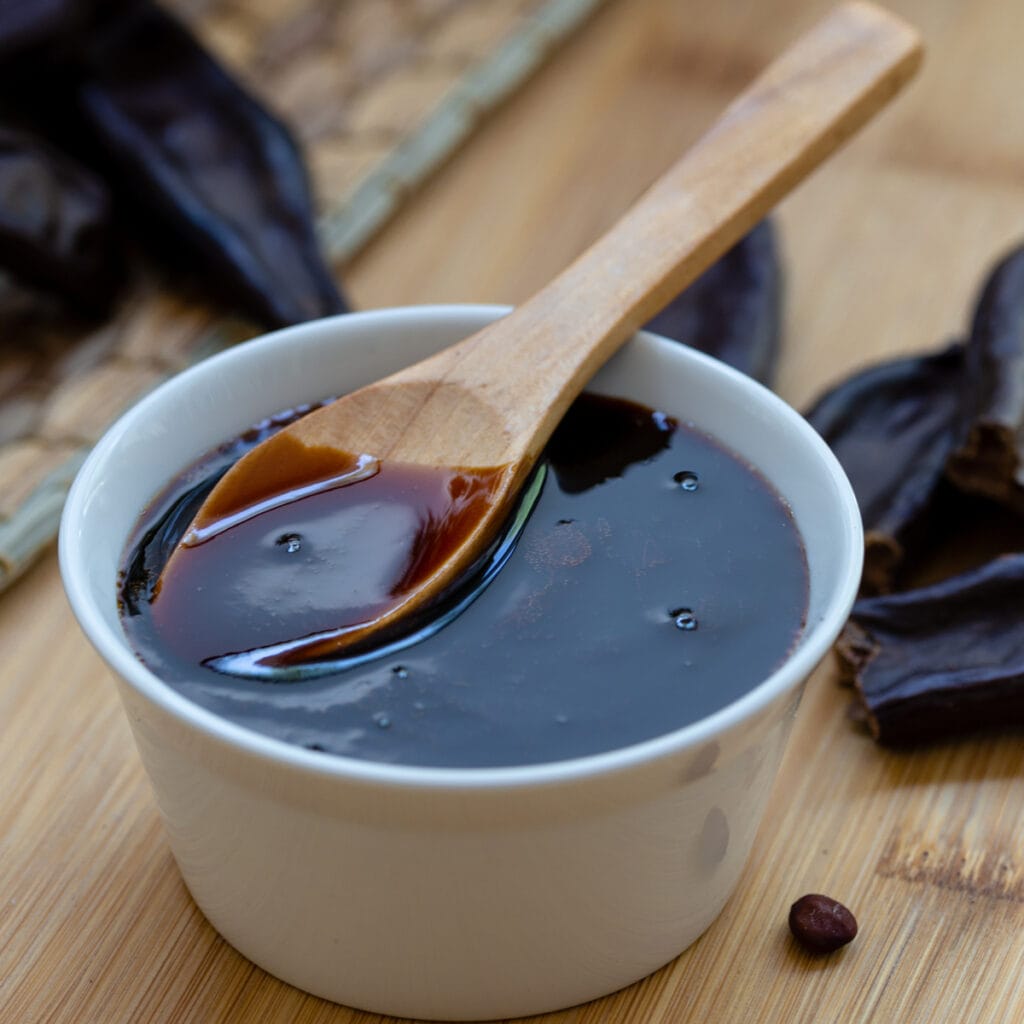
7. Molasses + Baking Soda
Molasses might not be the first thing that comes to mind as a baking powder alternative, but it is quite acidic.
And when you mix it with baking soda, you get that much-needed reaction we’ve been talking about.
Of course, it’s got a much thicker and stickier consistency than milk or yogurt, so you won’t need to reduce the other liquids as much.
Also, it is naturally sweet, so you may need to cut back on the other sugars in the recipe.
I find this substitution works best in desserts, cookies, and breads.
How to Substitute: Swap 1 teaspoon of baking powder with 1/4 cup of molasses + 1/4 teaspoon of baking soda.
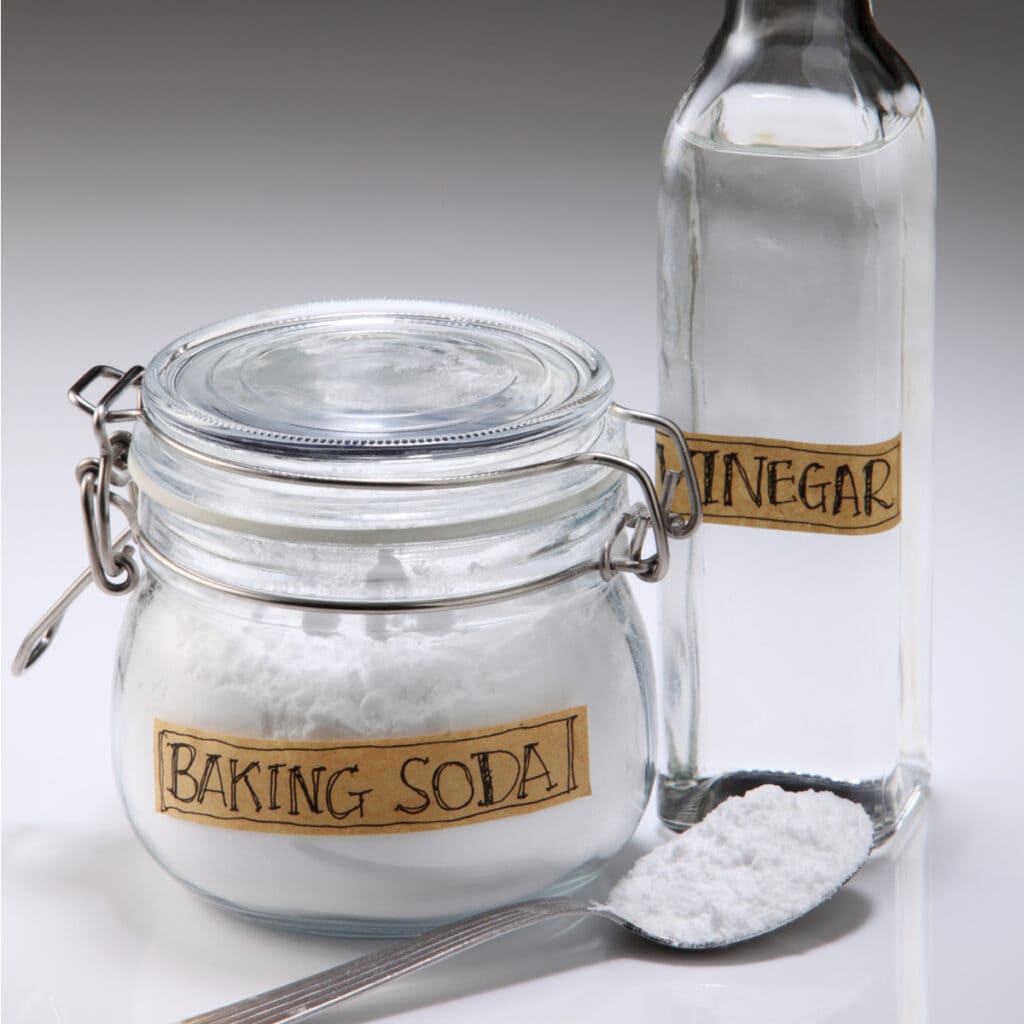
8. White Vinegar or Apple Cider Vinegar + Baking Soda
Vinegar and baking soda combine to make another excellent baking powder substitute. However, it’ll require a bit of kitchen alchemy to get it right.
The first step is taking the amount of baking powder and multiplying by 1/3.
For example:
- 1 tablespoon of baking powder / 3 = 1 teaspoon of baking soda
- 1 teaspoon of baking powder / 3 = 1/3 teaspoon of baking soda
Next, you add a double amount of vinegar.
For example:
- 1 teaspoon of baking soda needs 2 teaspoons of vinegar
- 1/3 teaspoon of baking soda needs 2/3 teaspoons of vinegar
It seems like a lot of work when you read it like that, but it isn’t.
And when you have it ready, it’s a quick addition to most recipes. Better still, you don’t need to adjust the sugar or other liquids in the recipe.
How to Substitute: Swap 1 teaspoon of baking soda with 1/3 teaspoon of baking soda + 2/3 teaspoons of vinegar.
Note: apple cider vinegar might leave a taste behind. But it’s okay in robust recipes, like dark chocolate cake!

9. Whipped Egg Whites
So far, all of our recipes have used baking soda. But what do you do if you don’t have baking powder or baking soda?!
Simple. Whip up some egg whites instead.
When you whip egg whites, you create bubbles. Those bubbles increase the volume of baked goods just like baking powder would.
The only real problem with this method is figuring out how many eggs you’ll need.
Cakes tend to use more, while waffles and pancakes use less.
Once you’ve determined that, though, it’s a simple substitution.
Just whip the eggs until they’re foamy, then beat them at a higher speed to form peaks.
How to Substitute: Swap 1 teaspoon of baking powder with 1-2 egg whites in small recipes.
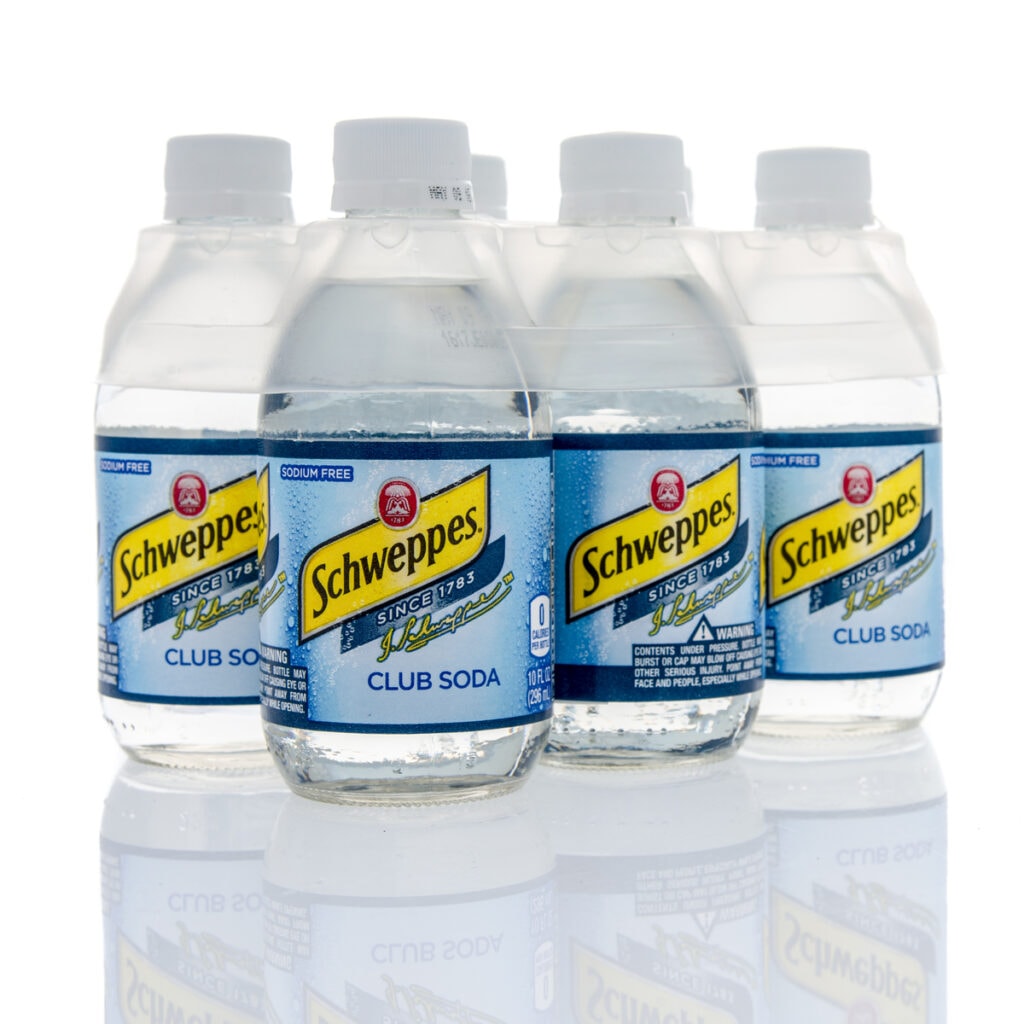
10. Club Soda
Club soda is carbonated and contains sodium bicarbonate.
That means you can also use it to replace baking powder without adding baking soda.
However, there isn’t a ton of sodium bicarbonate in club soda. So you won’t be able to add it to recipes that require a lot of extra volume.
It’s perfect for smaller treats like waffles and pancakes, though. The bubbles will make them super fluffy!
How to Substitute: Replace the milk or water in the recipe with club soda.
